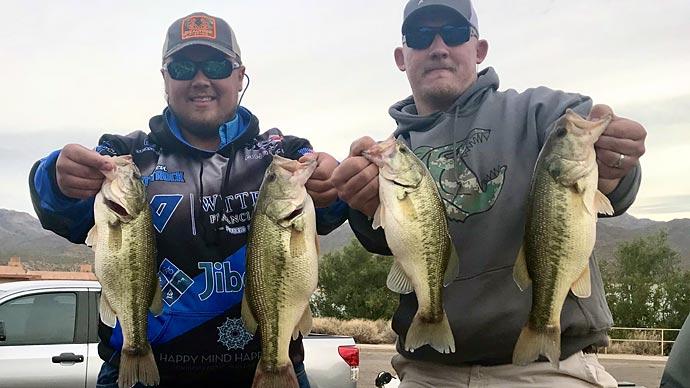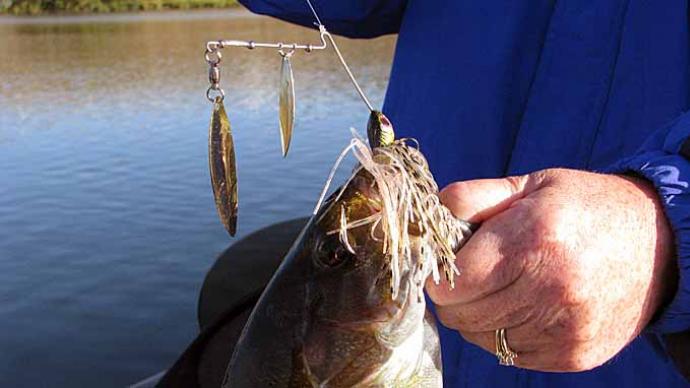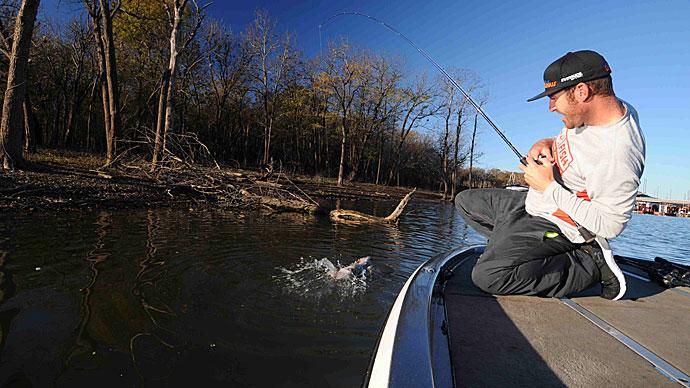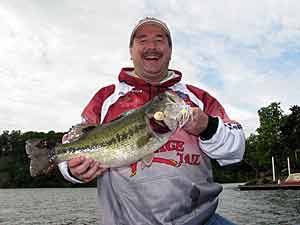
Arguably, one of the most productive search baits on the market is the spinnerbait. Whether you are a beginner or a seasoned pro angler, these lures will give you the ability to dissect a large area of water in a short period.
Although spinnerbaits are viewed as an easy to use or almost "foolproof" lure, certain factors will affect their productivity level.
As with any other bait selection, size and color are important factors. However, they represent only a tiny piece of the equation when choosing a spinnerbait.
When selecting the size of the lure, you must consider the time of year and water clarity. In the spring or clear water, it is possible to catch a giant bass on a bait as small as 1/8-ounce. The opposite occurs in the fall and muddy water, where larger profile baits as big as 1-ounce are the ideal choice. Many anglers view the 3/8-ounce size as the all-purpose size.
The color selection process can be broken down into two different segments—skirt color and blade color. I tend to keep this aspect very simple. When choosing the skirt color, I follow a general rule. I will typically use a white bait for clear water or sunny days. On cloudy days or in dirty water, I lean more towards darker-colored baits like black and blue. This simple guideline is also what I follow when selecting blade colors. On sunny days or in clear water, I will most often use silver blades. Silver has a greater reflection level than copper blades. Copper and painted blades are practical choices for dirty water or cloudy skies.
In my opinion, the single most crucial factor of the bait selection process is the blade configuration. Blades play a considerable role in the performance of these lures. They provide vibration, flash, lift and also affect retrieval speeds.
There are several different blade styles on the market. However, three styles seem to dominate in popularity. These styles are the Willow Leaf blade, Colorado, and Indiana blade. Each variation has its unique function.
The Colorado blade provides the highest level of lift for the bait. This is because its round design maximizes the amount of water being pushed. As a result, the lure will run shallower than baits with other blade styles. These blades also produce a great deal of vibration as they rotate in the water. The vibrations are sensed by the bass using their lateral lines. Because of the amount of water being displaced, these baits are excellent for muddy water when bass have limited visibility.
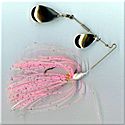
Indiana blades are more elliptical than the Colorado blade. The design causes less water to be moved by the blade during rotation. As a result of its narrower shape, these blades will cause the lure to run a little deeper. They also produce a longer silhouette in the water, increasing the flash level. These are good multipurpose blades.
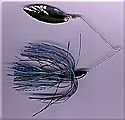
The Willow Leaf blade is very narrow in comparison to the Colorado blade. This design gives off a lot of flash and minimal vibration. Willow blades produce an even longer silhouette in the water because of their narrow shape and tight rotation. Spinnerbaits with Willow Leaf blades can be run a lot deeper than the previously mentioned blades. You can run these baits shallow, but you would have to retrieve the lure very quickly to do so. This blade is highly effective in clear water, where bass use sight as their primary sense.
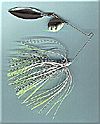
Combining the different blade styles on your lures is a great way to maximize the baits' performance. For example, you can have an ample supply of flash and vibration by using a bait equipped with both Willow Leaf and Colorado blades. By experimenting with different styles and configurations, you can develop a lure to meet your needs.
As with every other type of lure, the most critical aspect is your pure confidence. This can be obtained by frequently using and understanding how each variation works.
Proper line selection is another area that I feel is very important. Most anglers have their own opinion on what line is best. As I have said many times before, "I respect everyone's opinion." My preference for spinnerbait fishing is 15-20 pound test PowerPro line. PowerPro is a braided line that has virtually no stretch. The significance of this is that you have the power, even on long casts, to get enough force to drive the big spinnerbait hook into the jaw of the bass. In most cases, spinnerbaits are equipped with heavy gauge hooks ranging in size from 2/0 to 5/0. The line stretch can be as much as 25% when wet with some monofilaments. That represents a significant amount of power loss when setting the hook. In turn, it could result in several lost fish and lost earnings for tournament anglers. That logic is the basis for my preference to use PowerPro line.
By considering the multiple aspects of each fishing situation and analyzing each individually, an angler can more effectively choose the proper spinnerbait. Develop a simple checklist for choosing the appropriate bait. Determine such factors as depth, water clarity, retrieval speed, etc., and determine which configuration and size best suit your needs. By doing so, you will significantly increase the number of bass you catch on spinnerbaits.


